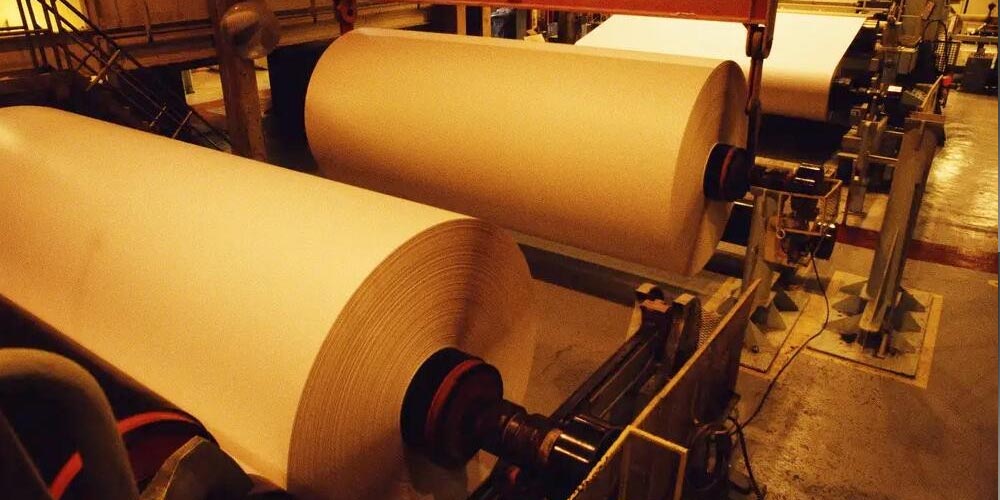Polyaluminium Chloride (PAC) yog ib qho tshuaj tseem ceeb hauv kev lag luam papermaking, ua lub luag haujlwm tseem ceeb hauv ntau theem ntawm cov txheej txheem papermaking. PAC yog ib qho coagulant feem ntau siv los txhim kho kev tuav cov khoom zoo, muab tub lim, thiab fibers, yog li txhim kho tag nrho cov kev ua tau zoo thiab kev tsim cov ntawv zoo.
Coagulation thiab Flocculation
Lub luag haujlwm tseem ceeb ntawm PAC hauv papermaking yog nws cov coagulation thiab flocculation zog. Thaum lub sij hawm papermaking, dej yog tov nrog cellulose fibers los ua ib tug slurry. Cov slurry no muaj ib qho tseem ceeb ntawm cov khoom zoo thiab cov organic yaj uas yuav tsum tau muab tshem tawm los tsim cov ntawv zoo. PAC, thaum ntxiv rau cov slurry, neutralizes cov nqi tsis zoo ntawm cov khoom raug tshem tawm, ua rau lawv sib sau ua ke rau hauv cov sib sau loj lossis flocs. Cov txheej txheem no ua rau muaj txiaj ntsig zoo hauv kev tshem tawm cov khoom zoo no thaum lub sij hawm tso dej, ua rau cov dej ntshiab dua thiab txhim kho fiber ntau tuav.
Txhim khu kev tuav pov hwm thiab kev tso dej
Kev tuav cov fibers thiab cov muab tub lim yog qhov tseem ceeb hauv kev ua cov ntaub ntawv vim nws cuam tshuam rau daim ntawv lub zog, kev ntxhib los mos, thiab tag nrho qhov zoo. PAC txhim kho qhov khaws cia ntawm cov ntaub ntawv no los ntawm kev tsim cov flocs loj dua uas tuaj yeem khaws tau yooj yim ntawm daim ntawv tshuab xaim. Qhov no tsis yog tsuas yog txhim kho lub zog thiab zoo ntawm daim ntawv tab sis kuj txo cov nqi ntawm cov khoom siv raw, ua rau kev txuag nqi. Tsis tas li ntawd, kev txhim kho cov dej ntws tau yooj yim los ntawm PAC txo cov ntsiab lus dej hauv daim ntawv, yog li txo lub zog xav tau rau ziab thiab txhim kho tag nrho cov txiaj ntsig ntawm cov txheej txheem papermaking.
Txhim kho daim ntawv zoo
Kev siv PAC hauv papermaking muaj txiaj ntsig zoo rau kev txhim kho cov ntawv zoo. Los ntawm kev txhim kho kev tuav pov hwm kev nplua thiab cov khoom ntim, PAC pab tsim cov ntawv nrog kev tsim kom zoo, sib xws, thiab cov khoom nto. Qhov no ua rau kev txhim kho kev luam ntawv, smoothness, thiab tag nrho cov tsos ntawm daim ntawv, ua rau nws zoo dua rau kev luam ntawv zoo thiab ntim daim ntawv thov.
Kev txo qis ntawm BOD thiab COD hauv Papermaking Wastewater Treatment
Biochemical Oxygen Demand (BOD) thiab Chemical Oxygen Demand (COD) yog kev ntsuas ntawm cov organic teeb meem tam sim no hauv cov dej khib nyiab tsim los ntawm cov txheej txheem papermaking. Cov qib siab ntawm BOD thiab COD qhia txog qib siab ntawm cov pa phem, uas tuaj yeem ua rau muaj kev puas tsuaj rau ib puag ncig. PAC txo qis BOD thiab COD qib los ntawm coagulating thiab tshem tawm cov organic paug ntawm cov dej khib nyiab. Qhov no tsis tsuas yog pab ua kom tau raws li kev cai ib puag ncig tab sis kuj txo cov nqi kho mob cuam tshuam nrog kev tswj dej khib nyiab.
Hauv cov ntsiab lus, polyaluminium chloride yog ib qho tseem ceeb ntxiv hauv kev lag luam papermaking, muab ntau yam txiaj ntsig uas txhim kho kev ua haujlwm ntawm cov txheej txheem papermaking thiab qhov zoo ntawm cov khoom kawg. Nws lub luag haujlwm hauv coagulation thiab flocculation, txhim kho kev tuav thiab tso dej, txo BOD thiab COD, thiab kev txhim kho tag nrho ntawm cov ntawv zoo ua rau nws yog ib qho tseem ceeb hauv kev ua cov ntaub ntawv niaj hnub no.
Post lub sij hawm: May-30-2024


